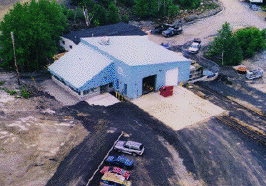|
The Sudbury Neutrino Observatory has been
constructed to study the
fundamental properties of neutrinos, in particular the mass and mixing
parameters. Neutrino oscillations between the electron-flavour neutrino
and another neutrino flavour have been proposed as an explanation of
the observed shortfall in the flux of solar neutrinos reaching the
Earth, as
compared with theoretical expectations. SNO has proven this hypothesis
by measuring the flux of electron type neutrinos which are produced in
the Sun via the charged current interaction (CC), and comparing it to
the flux of all active flavours of solar neutrinos detected on Earth in
an
appropriate energy interval via the neutral current (NC) and elastic
scattering (ES) reactions. SNO can also test the
oscillation hypothesis in the atmospheric neutrino
sector by measuring an angular distribution of arrival directions from
muon type neutrinos.
Observation of neutrino flavor transformation
is compelling
evidence of neutrino mass. Non-zero neutrino mass is evidence for
physics beyond
the Standard Model of fundamental particle interactions.
Having resolved the long-standing solar
neutrino problem by showing that solar neutrinos do change flavour,
SNO's mission is now to study the oscillation mechanism itself in
detail and to search for any further surprises that neutrinos may have
in store for us.
|
|
|

